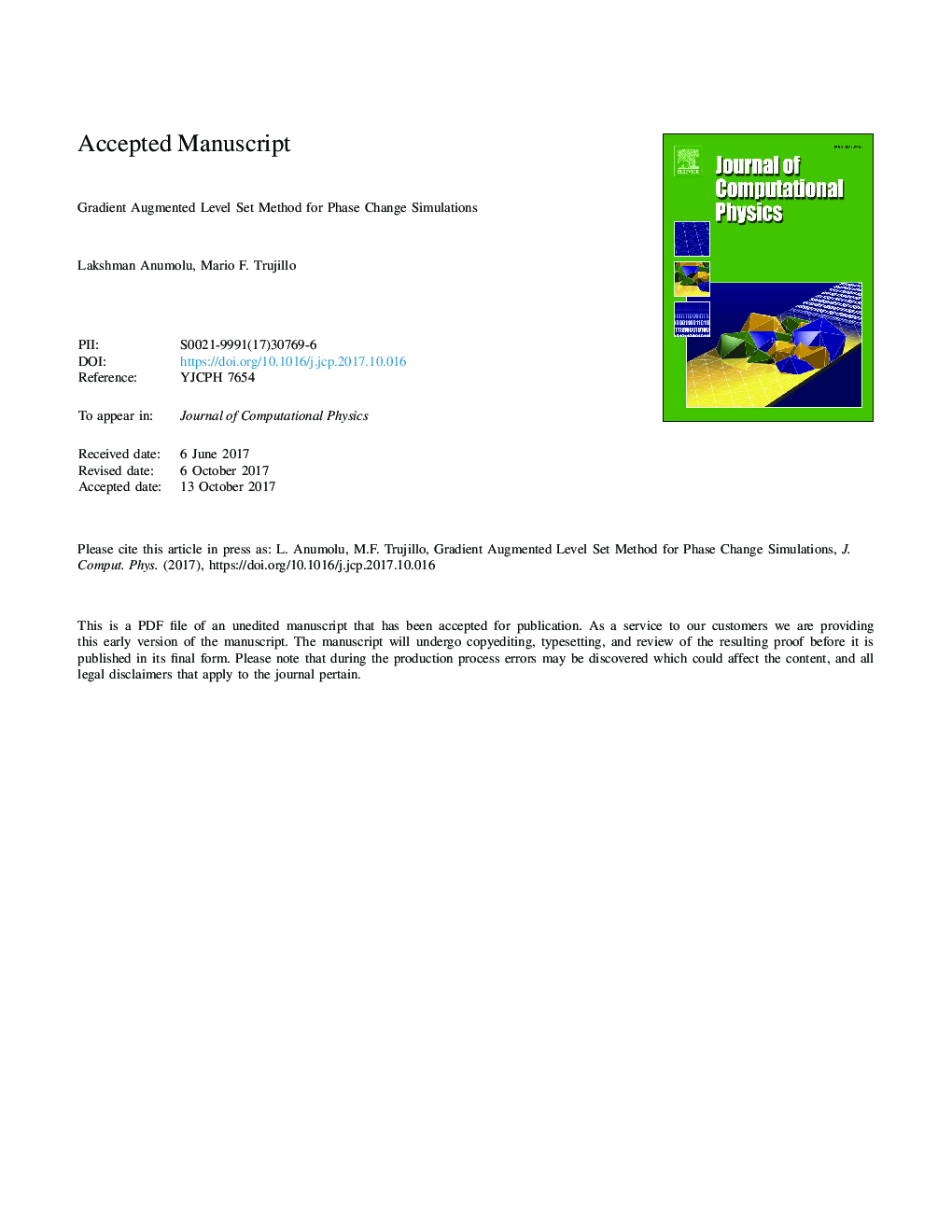| Article ID | Journal | Published Year | Pages | File Type |
|---|---|---|---|---|
| 6929323 | Journal of Computational Physics | 2018 | 41 Pages |
Abstract
A numerical method for the simulation of two-phase flow with phase change based on the Gradient-Augmented-Level-set (GALS) strategy is presented. Sharp capturing of the vaporization process is enabled by: i) identification of the vapor-liquid interface, Î(t), at the subgrid level, ii) discontinuous treatment of thermal physical properties (except for μ), and iii) enforcement of mass, momentum, and energy jump conditions, where the gradients of the dependent variables are obtained at Î(t) and are consistent with their analytical expression, i.e. no local averaging is applied. Treatment of the jump in velocity and pressure at Î(t) is achieved using the Ghost Fluid Method. The solution of the energy equation employs the sub-grid knowledge of Î(t) to discretize the temperature Laplacian using second-order one-sided differences, i.e. the numerical stencil completely resides within each respective phase. To carefully evaluate the benefits or disadvantages of the GALS approach, the standard level set method is implemented and compared against the GALS predictions. The results show the expected trend that interface identification and transport are predicted noticeably better with GALS over the standard level set. This benefit carries over to the prediction of the Laplacian and temperature gradients in the neighborhood of the interface, which are directly linked to the calculation of the vaporization rate. However, when combining the calculation of interface transport and reinitialization with two-phase momentum and energy, the benefits of GALS are to some extent neutralized, and the causes for this behavior are identified and analyzed. Overall the additional computational costs associated with GALS are almost the same as those using the standard level set technique.
Related Topics
Physical Sciences and Engineering
Computer Science
Computer Science Applications
Authors
Lakshman Anumolu, Mario F. Trujillo,
